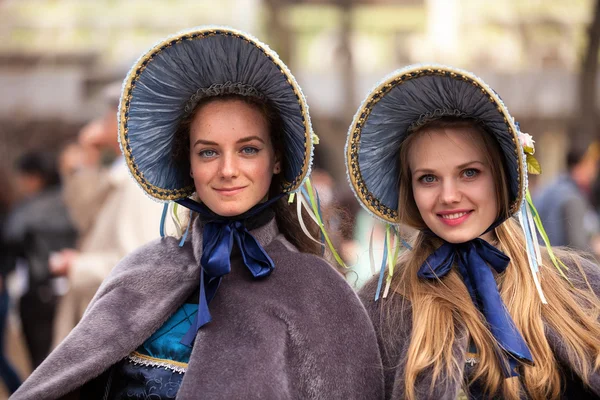What countries are Slavic girls from?
The Slavic nations are a group of countries that can be found throughout the middle, eastern, and southeastern parts of Europe. The languages spoken by people of Slavic descent are members of the Slavic branch of the Indo-European language family. This means that ethnically and linguistically, the Slavic people share a shared heritage. The following is a list of important characteristics shared by Slavic countries:

- The countries that make up the Slavic language family are dispersed across a large geographical area. Countries such as Russia, Ukraine, Poland, the Czech Republic, Slovakia, Belarus, Serbia, Croatia, Slovenia, Bulgaria, and others are included in this group of nations. Russia is the most extensive Slavic nation in terms of land area, whereas Ukraine is the most populous Slavic nation.
- History and Culture The Slavic countries have a long and illustrious history, that spans a wide variety of time periods and topics. They have been subject to a variety of influences from the cultures and civilizations of nearby regions, such as the Byzantine, Ottoman, and Austro-Hungarian empires, as well as those of Western Europe. This has played a significant role in the development of their distinctive arts, architecture, music, and literature.
- Religion: Historically, the vast majority of Slavic countries have been predominately Christian, with Eastern Orthodox Christianity being the largest branch of this faith. However, there are also sizeable communities that adhere to the Catholic and Protestant faiths in certain nations. The religious practices and customs practiced there have a significant impact on the cultural fabric of these countries.
- Languages Spoken in Slavic Countries The families of languages spoken in Slavic countries belong to the Indo-European language family. There are three primary groups of Slavic languages: East Slavic, West Slavic, and South Slavic. East Slavic languages include Russian, Ukrainian, and Belarusian; West Slavic languages include Polish, Czech, and Slovak; and South Slavic languages include Serbian, Croatian, Slovenian, and Bulgarian. There are certain linguistic and grammatical parallels between the many branches, despite the fact that each one has its own unique qualities.
- Systems of Government: The nations that make up the Slavic region have a variety of political structures, ranging from presidential republics to parliamentary democracies. Since the demise of communism in the latter half of the 20th century, there has been a dramatic shift in the political landscape, which has resulted in certain nations joining the European Union and NATO.
- Food: The agricultural traditions and diverse regional landscapes of the Slavic countries are reflected in the food of these countries. Potatoes, cabbage, cereals, meat (especially hog), fish, and dairy products are all frequently used ingredients. Pierogi, which is similar to dumplings, borscht, which is similar to beet soup, goulash, sausages, and many types of robust stews are also popular foods.
- Festivals and Celebrations: Slavic countries have a rich legacy of festivals and celebrations, which are frequently based on religious or folk traditions. These traditions can be traced back several centuries. For instance, Russia celebrates Maslenitsa, also known as Butter Week; Poland celebrates Wianki, also known as Midsummer Night; Ukraine celebrates Vyshyvanka Day, also known as Embroidery Day, and Serbia celebrates the Exit Festival.
- Slavic countries are known for their stunning natural beauty, which includes a variety of landscapes such as huge plains, forests, mountains, lakes, and rivers. These countries provide a diverse selection of natural features, ranging from the vast wilderness of Siberia in Russia to the lovely Carpathian Mountains in Ukraine and the breathtaking Adriatic coastline in Croatia.
It is essential to keep in mind that, despite the fact that Slavic countries have many things in common, each nation possesses its own distinct history, culture, and identity. Geography, historical events, and interactions with neighboring regions are just a few of the factors that have shaped these aspects.

Visit our Featured Girls Profile Page to browse Sexy Profiles
Slavic women traditions and culture
Slavic women, similar to Slavic boys, are raised in a cultural and traditional context that differs from country to country within the Slavic region. The following is a list of general features of Slavic girls’ culture and traditions. It is crucial to note that individual experiences and behaviors may vary, but the following is nonetheless included:
- Family is given a prominent role in Slavic society, and as a result, young women are frequently instilled with a deep respect for the institution of the family. They are instructed to show deference to their ancestors, to keep in touch with their relatives, and to take part in the gatherings and festivities of the family.
- Traditional gender roles have always been extremely important in Slavic civilizations, despite the fact that these roles have changed considerably throughout the course of history. Throughout history, it was common practice for parents to anticipate their daughters taking on domestic chores such as cooking, cleaning, and looking after younger siblings. However, modern Slavic countries are becoming more open to the concept of gender equality, and as a result, girls now have more access to educational and professional advancement opportunities.
- Festive Attire: During festivals, weddings, and other cultural events, it is common for young women in Slavic countries to dress in traditional clothes. The traditional garb of these people can range from simple to ornate and brightly colored, depending on the location, and may have embroidery, beads, or other types of ornamentation.
- Folklore and Mythology: Both Slavic folklore and mythology are filled with a wide variety of tales and legends, many of which center on formidable female protagonists. The legends of Baba Yaga and Rusalka, both of which have their origins firmly planted in Slavic folklore, are the types of stories that young girls in Slavic countries might hear as they grow up.
- Needlework and other Handicrafts: Across the Slavic world, needlework has long held a prominent position in the cultures of numerous countries. Girls may learn the art of needlework from their mothers or grandparents, and they can use this talent to design intricate patterns on clothing, home goods, and decorative items. These handicrafts are both a means of preserving cultural history and an outlet for creative expression.
- Holidays of the Past Slavic girls often take an active part in the various traditional holidays and rituals of their culture. For instance, on the holiday known as Vyshyvanka Day, young women in Ukraine may participate in the creation of traditional embroidered blouses known as vyshyvankas and wear them. During folk festivals and other cultural events, it is not uncommon for young ladies to take part in traditional activities such as dancing, singing, and playing games.
- Education and Profession: In contemporary Slavic communities, there is a growing emphasis placed on the educational and professional options available to women. Girls have the same opportunities as boys when it comes to education, and they can pursue a diverse array of careers, from medical and law to science and the arts. As a result of this transformation, Slavic women now have the ability to defy the traditional gender roles that have been assigned to them and make important contributions in a variety of professions.
- Girls in Slavic cultures are encouraged to participate in a wide variety of sports and other physically demanding activities, both for fun and to advance their careers. Gymnastics, figure skating, soccer, basketball, and volleyball are just some of the most popular sports for women to participate in across numerous Slavic nations. Taking part in sporting activities is a great way to improve one’s physical fitness, sense of community, and sense of accomplishment.
- It is essential to recognize that the cultural practices and traditions of individual Slavic nations, as well as between these nations, might vary. Additionally, it is possible that younger generations will adopt various habits as a result of the influence of modern culture and globalization. In addition, there is a variety of cultural manifestations found inside each country due to the presence of cultural diversity, which is characterized by the presence of various ethnic groups and regional differences.
Why are Slavic girls so beautiful?
No matter if you’re a man or a woman, you might be drawn to the natural beauty of Slavic women. In addition to their cute looks, most of them also have nice personalities. This is said to be because they have the famous “Slavic soul.” But what are their real beauty and attractiveness secrets?
There is no doubt that Mother Nature was kind to women from Slavic countries. Their skin is very light, and their eyes are either blue or green. Slavic women are attractive because they are slim and thin. Slavic brides know how to live in a way that keeps their genetic heritage alive.
They know how to keep their skin from getting too cold, and they don’t go out in the sun like Western women do. Here is a perfect example of the kind of Slavic woman that many men want to marry.
Slavic girls have their own style, which has made them beauty icons. Because, in addition to taking care of their bodies, they also care about how they look. They always look good because they wear trendy clothes, heels, and make-up that look great. Their skin and complexion also look great. The Slavic girl is mysterious and has a style that is both interesting and attractive, which often makes her look like a magnet to male eyes.
Tips and Dating Slavic Girls Rules

Dating a Baltic woman can be a wonderful experience due to her attractiveness, intelligence, and kindness. Although there are cultural distinctions between the Baltic countries, such as Estonia, Latvia, and Lithuania, there are also commonalities in dating habits. Some things to keep in mind when dating Baltic women romantically are as follows:
- Women in the Baltic region value their partners’ respect and politeness. Be kind toward them, show interest in what they have to say, and make an effort to learn more about them as people.
- Appearance is important to women in the Baltic region, therefore, men who make an effort with their clothing will likely receive positive feedback. It’s best to dress to impress and maintain a neat and elegant appearance when going on a date.
- Baltic women are known for their commitment to open and honest dialogue. They value partners who can articulate their emotions and opinions clearly. Talk to them, ask them questions, and pay close attention to what they say.
- Respect for Other Cultures: Study up on the history and customs of your Baltic date’s homeland. Learning about her background and culture is a kind gesture that can help you connect with her on a more meaningful level.
- Baltic women like thoughtful romantic gestures like flowers, surprises, and well-organized dates. Making a Baltic woman feel loved and valued might begin with the smallest gestures on your part.
- Many women in the Baltic Republics take advantage of the region’s stunning scenery by participating in a wide variety of outdoor pursuits. Date ideas that entail time spent outdoors, like hikes or visits to parks, are worth considering. Together, you can take in the beautiful scenery and have some quality time.
- Women from the Baltic region are typically intelligent and well-read. Discuss things you’re interested in, whether it’s books, art, politics, or the news. When dating a Baltic lady, it can be helpful to have similar levels of education and experience.
- Family is very important to a woman from the Baltic region. They place a high value on family life and treasure their relationships with their loved ones. As the relationship develops, show an interest in her family and be willing to include her in yours.
- Women in the Baltic region appreciate men who are patient, loyal, and willing to put effort into their relationships. Spend time learning about each other’s aspirations, and be ready to put in the effort to forge a link that will last.
- Keep in mind that these are just some broad suggestions and that every single woman has her own preferences and character. When dating a Baltic lady, it’s crucial to keep an open mind, be genuine, and value her independence. Successful and satisfying romantic relationships are built on open lines of communication, mutual respect, and shared ideals.






